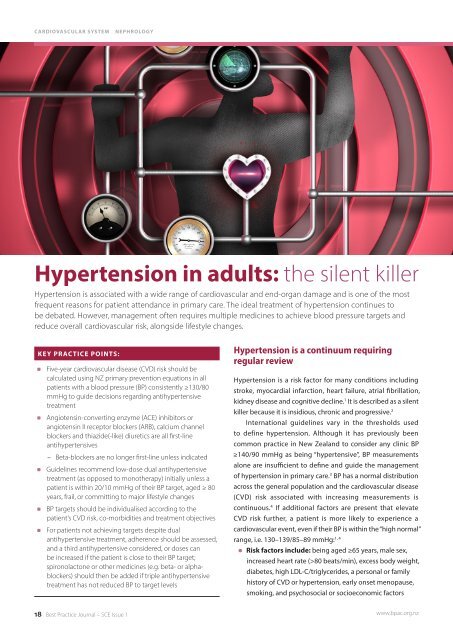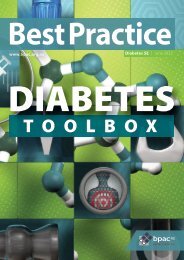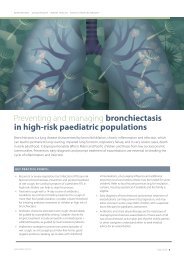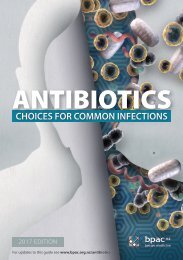You also want an ePaper? Increase the reach of your titles
YUMPU automatically turns print PDFs into web optimized ePapers that Google loves.
CARDIOVASCULAR SYSTEM<br />
NEPHROLOGY<br />
Hypertension in adults: the silent killer<br />
Hypertension is associated with a wide range of cardiovascular and end-organ damage and is one of the most<br />
frequent reasons for patient attendance in primary care. The ideal treatment of hypertension continues to<br />
be debated. However, management often requires multiple medicines to achieve blood pressure targets and<br />
reduce overall cardiovascular risk, alongside lifestyle changes.<br />
KEY PRACTICE POINTS:<br />
Five-year cardiovascular disease (CVD) risk should be<br />
calculated using NZ primary prevention equations in all<br />
patients with a blood pressure (BP) consistently ≥130/80<br />
mmHg to guide decisions regarding antihypertensive<br />
treatment<br />
Angiotensin-converting enzyme (ACE) inhibitors or<br />
angiotensin II receptor blockers (ARB), calcium channel<br />
blockers and thiazide(-like) diuretics are all first-line<br />
antihypertensives<br />
– Beta-blockers are no longer first-line unless indicated<br />
Guidelines recommend low-dose dual antihypertensive<br />
treatment (as opposed to monotherapy) initially unless a<br />
patient is within 20/10 mmHg of their BP target, aged ≥ 80<br />
years, frail, or committing to major lifestyle changes<br />
BP targets should be individualised according to the<br />
patient’s CVD risk, co-morbidities and treatment objectives<br />
For patients not achieving targets despite dual<br />
antihypertensive treatment, adherence should be assessed,<br />
and a third antihypertensive considered, or doses can<br />
be increased if the patient is close to their BP target;<br />
spironolactone or other medicines (e.g. beta- or alphablockers)<br />
should then be added if triple antihypertensive<br />
treatment has not reduced BP to target levels<br />
Hypertension is a continuum requiring<br />
regular review<br />
Hypertension is a risk factor for many conditions including<br />
stroke, myocardial infarction, heart failure, atrial fibrillation,<br />
kidney disease and cognitive decline. 1 It is described as a silent<br />
killer because it is insidious, chronic and progressive. 2<br />
International guidelines vary in the thresholds used<br />
to define hypertension. Although it has previously been<br />
common practice in New Zealand to consider any clinic BP<br />
≥140/90 mmHg as being “hypertensive”, BP measurements<br />
alone are insufficient to define and guide the management<br />
of hypertension in primary care. 3 BP has a normal distribution<br />
across the general population and the cardiovascular disease<br />
(CVD) risk associated with increasing measurements is<br />
continuous. 4 If additional factors are present that elevate<br />
CVD risk further, a patient is more likely to experience a<br />
cardiovascular event, even if their BP is within the “high normal”<br />
range, i.e. 130–139/85–89 mmHg: 1, 4<br />
Risk factors include: being aged ≥65 years, male sex,<br />
increased heart rate (>80 beats/min), excess body weight,<br />
diabetes, high LDL-C/triglycerides, a personal or family<br />
history of CVD or hypertension, early onset menopause,<br />
smoking, and psychosocial or socioeconomic factors<br />
18 Best Practice Journal – SCE Issue 1 www.bpac.org.nz









